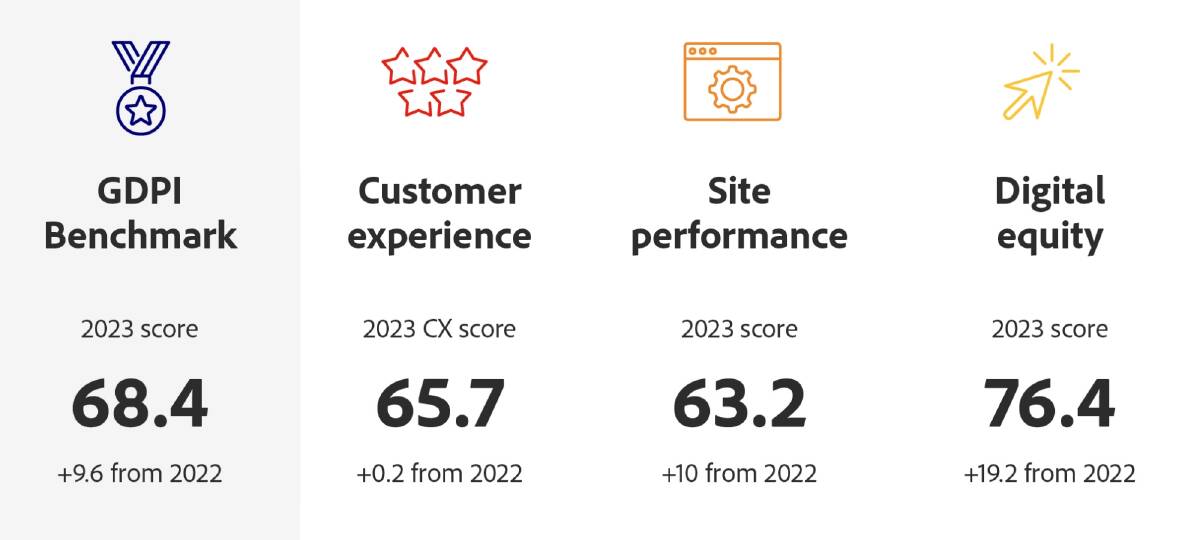Ensuring that no Australians are left behind in a digital first world

This is branded content for Adobe.
There have been many consequences of the COVID-19 pandemic that have left a permanent mark on the way we live our lives.
One is our accelerated shift towards wanting to do more of the essential tasks of life via our devices. That includes the way we interact with government and access public services.
Today 90 per cent of Australians say they prefer digital as their channel to interact with government, according to research conducted by digital marketing and software giant Adobe for its annual Global Government Digital Performance and Inclusion Benchmark (GDPI) report (GDPI) report. That compares to around 50 per cent in 2017.
"It's a figure that has moved significantly - driven largely by the pandemic and the increase in mobile adoption," said John Mackenney, Practice Director of Digital Strategy for Adobe APAC.
"Digital is becoming more and more important in our lives particularly in a world when governments need to communicate with people more quickly, whether that's in a health crisis and national emergencies, or in times of need like the current cost of living pressures.
"Demand for online public services is accelerating, and governments must meet citizen expectations for highly functional and efficient experiences."
At the same time, the report found accessing government services online remained time-consuming and often frustrating with 63 per cent of us visiting six or more government websites before finding what we need.
Mr Mackenney said this highlighted the need to prioritise investment to continue to improve the digital experience, harnessing better design and new technologies like generative AI to better meet people's needs.
"The ways government needs to communicate with citizens has fundamentally changed and that's driving the need for more resources into those channels to make it a simpler and faster - and more pleasant - experience," he said.
"There are lots of benefits, from saving people time and ensuring they know about and are able to access services, to the greater efficiencies that it can deliver for governments."
Australia improved but could be better
The GDPI Benchmark aims to help governments identify the challenges their citizens face when finding, accessing and engaging with digital government services. It also benchmarks governments' performances against their global peers.
This year's report found Australia's performance had shown significant improvement.

After scoring 58.9 per cent in the first report it had jumped to 68.4, moving it from an "emerging" to "intermediate" level of digital maturity that placed it second amongst six countries examined in the latest research, just behind the UK.
And the performance of some Australian governments and their agencies including the NSW Government, MyGov, and the NDIS were amongst the leading five agencies globally.
"The positive thing about the study was that Australia is doing really well in terms of social equity indicators, such as whether the content is readable, is it providing content for the nearly 25 per cent of Australians who don't speak English in their home," said Mr Mackenney.
"There were also improvements in site performance including things like mobile sites loading quickly, even in regional and remote parts of the country. Relative to other countries, Australians are getting a better experience in this aspect."

But while Australia's investments in digital public service delivery was making a difference there was great room for improvement.
"The benchmark scores Australian governments at around seven out of ten," said Mr Mackenney. "If you compare this to say a leading bank or telecommunications company, they'll still be around 15 percentage points behind on the quality of service. So there is more work to be done to improve this."
One stop shops star
Of the 120 departments analysed globally, the top three were Australian - the websites for Services NSW, the National Disability Insurance Scheme, and MyGov.
MyGov's top site performance score was led by improved site speed, search and findability of content in a result that also led to it being awarded a global Service to the Citizen award.
Service NSW led the way in customer experience with initiatives such as consolidating multiple websites into a single front door and the use of personalisation capabilities to streamline citizen journeys.
The NDIS had the top digital social equity score, driven by the site's availability of advanced accessibility features, including the integration with screen readers, the ability to adjust font sizes and toggle high and low contrast.
Mr Mackenney said the highest scoring sites globally were those that consolidated multiple services into one single portal such as MyGov and Service NSW.
"There are more than 3000 government websites in Australia, so for citizens trying to navigate that can be complex," said Mr Mackenney.
"People shouldn't need to have an understanding of the internal mechanisms of the Westminster system of government to find and access the services they need.

"Having that central site for people to go to, that is really customer-centric, that brings all the key content into one place and has features that make it easy to use is key. For example, if you live in NSW it's very clear where you need to go to find the services you need."
AI adds personal touch
Key to transforming digital government services is greater personalisation, being able to assess the user's needs and guide them to the particular services they need, said Mr Mackenney.
He said this was an area where the rapid development of AI was providing exciting opportunities.
"There's significant potential for generative AI to help narrow the digital divide, whether that's by improving digital self-service or more responsive and personalised interactions," he said.
"Any government strategy around the world will talk about offering seamless personalised government services, but to do that you need a lot of content and messages to actually provide that personalised service. That would require huge amounts of investment which in the current fiscal climate would be unachievable.
"But AI allows you to effectively create those different nuanced messages and interfaces for different people - depending on who they are, where they live, and their specific circumstances - to actually help them find services and support they need quickly and easily."
For more information you can read the full report here.


